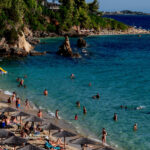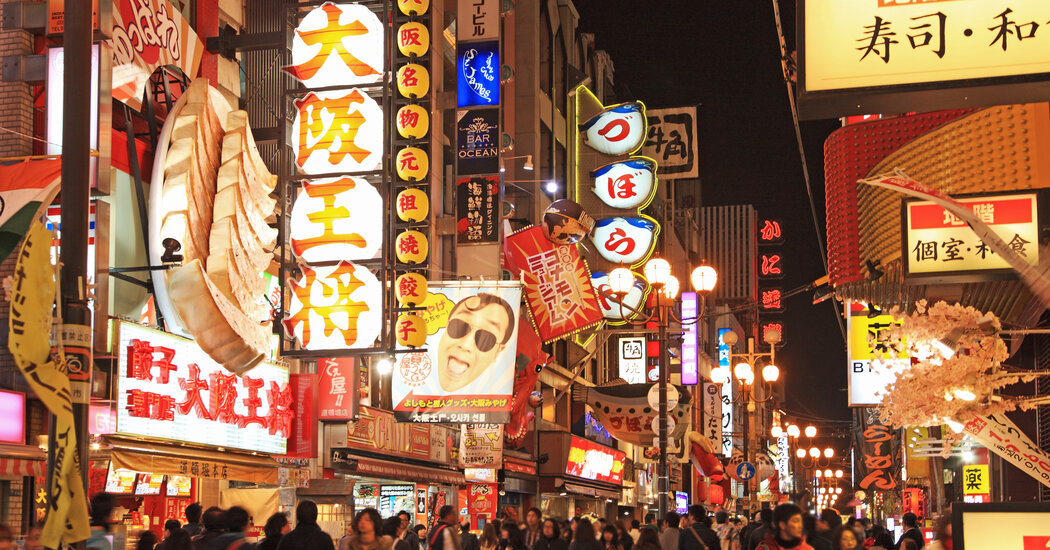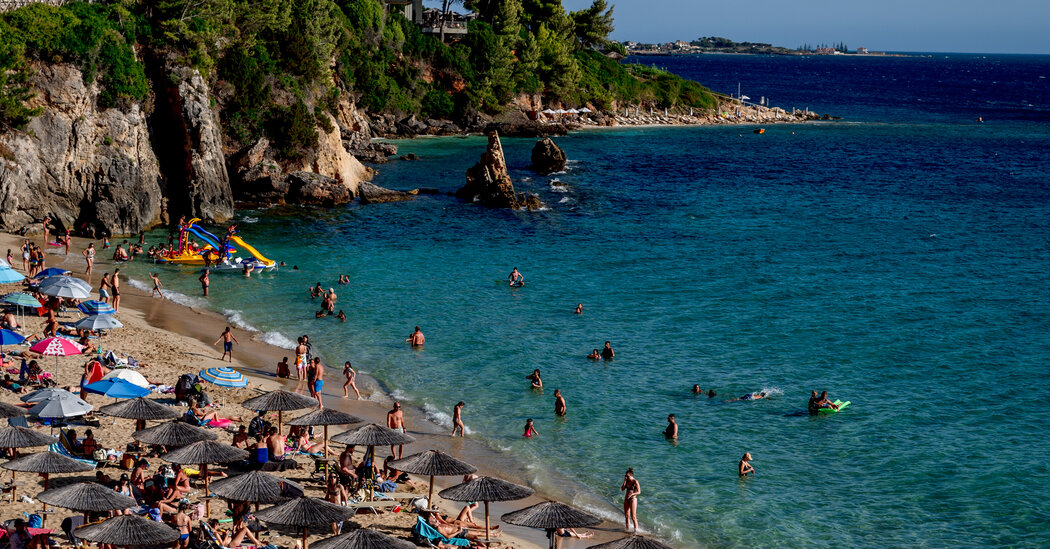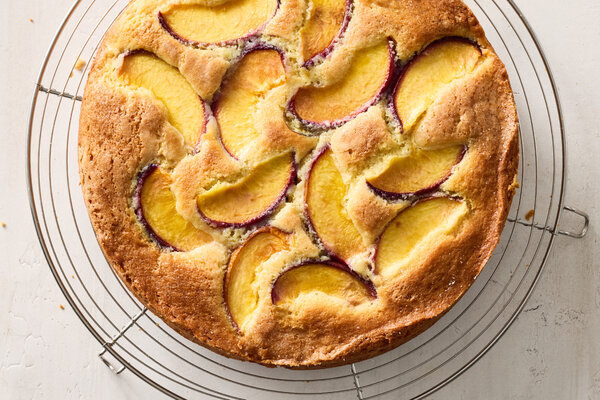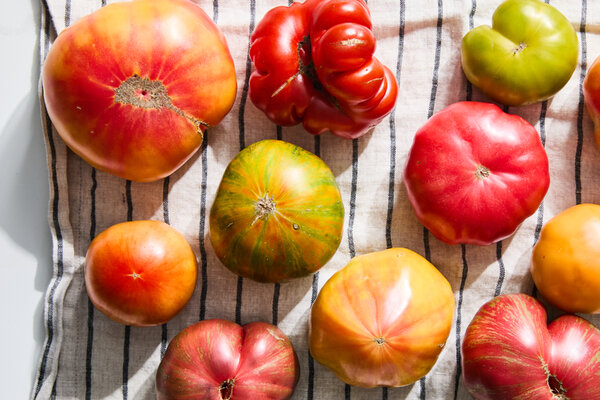For Americans, there has rarely been a better time to visit Japan. After years of pandemic-related closure, the country reopened in the summer of 2022 with a sense of renewal, thanks largely to the Tokyo Olympics the previous year, which had brought a flurry of hotel openings and infrastructure improvements, not just in the capital but across the country. The relative strength of the dollar against the yen, though weaker than for much of last year, still means that Japan has been more affordable recently than it’s been in decades, making splurges on otherwise off-limits luxuries (whether hotels, restaurants or shopping) a real possibility — even on a budget.
First-time visitors should allow at least 10 days to explore the Golden Route, so called because the destinations it covers — including Tokyo, Kyoto, Osaka and points in between — are the gold standard for tourism here, and all connected by a highly convenient rail system. For this 10-day itinerary, we consulted two expert travel advisers: Sara Aiko, the founder of Curated Kyoto, who specializes in fashion and design, and Scott Gilman, the managing partner and a co-founder of the bespoke luxury travel company JapanQuest Journeys. Their aim? To fine-tune the ideal tour, combining visits to must-see landmarks with detours to their own favorite under-the-radar spots. Each day includes a high option for those who want to indulge on an expensive hotel or meal, and a low option for budget-friendly alternatives. (Hotel rates below are for two people.) This itinerary is also meant to provide occasional relief from the crowds: Last year, Japan welcomed almost 40 million international visitors — a record.
Day 1: Tokyo
For many visitors, Tokyo, the capital city, epitomizes the country — a megalopolis with streets drenched in neon and dense with restaurants, bars and shops catering to every conceivable niche. It’s also the easiest entry point to Japan, with multiple nonstop flights a day from most major U.S. cities. There are two main international airports: Narita and Haneda, the latter being preferable, since it’s considerably closer to the urban core. Although Japan’s subway and rail system is legendarily efficient and reliable, Gilman can also arrange a car and driver for an airport transfer, and for one or multiple days here — especially useful if a trip coincides with the brutal heat of summer, when humidity and 90-degree temperatures make it difficult to walk for any distance outdoors. Today, you’ll check into your hotel and explore the surroundings .
High: Gilman’s luxury retreat of choice is the 179-room Mandarin Oriental, Tokyo, occupying the 30th to 38th floors of a modern high-rise in Nihonbashi, a commercial district peppered with historic sites. “I love the intimate lobby and the great service, and they have one of the best Chinese restaurants in the city, Sense,” says Gilman. Rooms from about $1,000 a night.
Low: Aiko is partial to the 25-room Trunk Hotel near Yoyogi Park, Tokyo’s answer to Central Park. It has a rooftop pool — an especially welcome amenity in summer — and is within walking distance of the nightlife and shopping district of Shibuya, and of Harajuku, a neighborhood best known for its boutiques and locals showing off their outrageous style. Rooms from about $540 a night.
Day 2: Tokyo
Start your first full day in Tokyo focused on one of the great pleasures of this city: food. Tsukiji Outer Market, near the luxury-shopping and -hotel district of Ginza, is known for exceptionally fresh sushi. Tsukiji was once home to the largest wholesale fish market on earth and, while the famous tuna auctions have moved about a mile-and-a-half away to Toyosu Market (which is mostly off limits to visitors), there are still hundreds of food and produce stalls to explore. Vendors here sell everything from uni-topped rice bowls to sizzling tamagoyaki, a Japanese omelet, and fresh green teas.
In the afternoon, dive into another category that Tokyo does best: art and craft. Begin at the avant-garde world of digital art at TeamLab Borderless in Azabudai Hills, a giant new development of skyscrapers in central Tokyo, where immersive projections blur the line between viewer and work. Aiko also recommends Sogetsu Plaza at the Sogetsu Foundation for “its exhibitions that range from large-scale ceramic pots to contemporary fashion. The building was designed by Kenzo Tange, one of Japan’s most famous architects, while the plaza itself is a stone garden created by the artist Isamu Noguchi.”
High: For dinner, head to Shima, near the Mandarin Oriental, which specializes in Wagyu steak. Grab a counter seat to watch the cooks prepare the evening’s meals. Diners have the option of ordering steak sandwiches (served on Japanese milk bread, also known as shokupan) to take with them for a late night snack.
Low: Americans may find it surprising that 7-Eleven, the ubiquitous convenience store chain, is revered in Japan thanks to the cheap, high quality snacks and meals it sells at any time of day or night. Dinner here might include a combination of onigiri (a rice ball wrapped in seaweed, filled with various items like salted salmon or pickled plums), karaage (fried chicken) and the store’s addictive Japanese-style egg salad sandwiches.
Day 3: Tokyo
Begin with a morning stroll through Meiji Shrine, where towering, traditional torii gates lead you into a 178-acre forest, including oak and camphor trees. The earlier you arrive, the less likely you are to be swallowed up by the groups of sightseers. (The shrine opens at sunrise, although the Inner Garden is only accessible from 9 a.m., and the Meiji Jingu Museum from 10 a.m.) Nearby Omotesando Avenue is a good place to experience the city’s steroidal retail scene, with its audacious boutiques — among them Prada’s, with its latticed facade designed by Herzog & de Meuron, and Louis Vuitton’s, housed in the architect Jun Aoki’s glass edifice. (Gilman can arrange a guided architect-led tour of Tokyo’s eclectic building styles.) One of Aiko’s favorite shops is Bed J.W. Ford in Shibuya, about a 15-minute walk from the buzz of Harajuku. Founded in 2010 by the self-taught designer Shinpei Yamagishi, it’s technically a men’s wear store, but the pieces are designed to suit women as well. For a different kind of aesthetic education, the Nezu Museum’s collection of Japanese and East Asian art is rivaled only by its resplendent gardens. And later, explore the winding streets of Azabu Juban, a well-heeled, mostly residential neighborhood, pausing for local confectioneries while catching a glimpse of everyday life in Tokyo. The day closes with an evening stroll around the Imperial Palace moat before heading over to Ginza, a short walk away.
High: While in Ginza, grab a drink at the 12-seat bar High Five, which serves delicious cocktails like the Japanese Garden (whisky, melon liqueur and green tea liqueur) and the Yokohama (dry gin, vodka, orange, grenadine and Pernod), although the bartenders are known for tailoring each drink to the individual guest.
Low: If karaoke is on your Tokyo wish list, head to Karaoke Kan Shibuya, made famous by the 2003 film “Lost in Translation.”
Day 4: Tokyo
Today is a study in contrasts. Begin at Shinjuku Gyoen, a botanical garden that spans 144 acres and originated in the 18th century. Here cherry blossoms bloom in spring, the leaves are ablaze in autumn and you’ll find traditional English and French gardens along with typical Japanese landscapes, as well as an enclosed greenhouse home to a variety of tropical and subtropical plants and flowers. Later head to the Akihabara district, a technophile’s dreamland crowded with anime shops and retro gaming arcades. Or if you prefer a more subdued scene, venture into the quietly stylish Daikanyama neighborhood, home to artisanal coffeehouses and the splendid Tsutaya Books complex. Not only does Tsutaya carry an endless-seeming selection of art and design titles but it has a huge selection of magazine back issues.
High: Tokyo has no shortage of acclaimed French restaurants, including the farm-driven La Paix, which Gilman recommends for its six-course lunch menu that may include dishes like foie gras mousse, roasted duck with a port wine sauce and salt ice cream.
Low: There are few things more quintessentially Japanese than a bowl of ramen, and Gilman’s favorite is served at Kyushu Jangara Ramen in Harajuku, a casual counter-seating spot to refuel between sites.
Day 5: Kanazawa
Gilman recommends at least a day in the coastal city of Kanazawa, an easy 2.5-hour Shinkansen bullet train ride northwest from Tokyo. (Like Kyoto, the city was largely spared from bombing during World War II.) Aside from wandering the 17th-century samurai neighborhood of Nagamachi and the 19th-century geisha district of Higashi Chaya, there are two must dos. The first is Omicho Market, a maze of about 200 food and produce stalls that’s a popular spot for lunch (often a bowl of rice topped with some kind of fresh seafood). The second is a stroll through the Kenrokuen Garden, founded by the Maeda clan, prolific patrons of the arts in the 17th century. Walking the grounds of this 25-acre expanse of ponds, teahouses, sculptures and over 8,000 trees is a serene prelude to an overnight ryokan stay.
High: Kanazawa offers a number of fine ryokans, the traditional Japanese inns that are often family-run affairs with just a few rooms — almost like guesthouses but without the overt familiarity. One of the standouts is the three-room Asadaya Ryokan, owned by the same family that opened it over 350 years ago. An added bonus is that it’s adjacent to Omicho Market. Rooms from about $700 a night.
Low: Uan Kanazawa is a modern hotel with 47 clean-lined, simply designed guest rooms within walking distance of sites like Kanazawa Castle and the popular nightlife districts Korinbo and Katamachi. Rooms from about $100 a night.
Day 6: Kyoto
Board a two-hour Shinkansen to Kyoto, Japan’s capital from 794 to 1868. Despite the preconceived notions many foreigners might have about the city — that it’s something like a preserved-in-amber open-air museum — it’s in fact a metropolis with a population of over 1.4 million. And while imperial architecture and Zen temples are plentiful, there’s much more than just history to appreciate here. ((But beware: The most popular areas, like Gion and Higashiyama, are often thick with crowds, especially in spring and fall, typically the busiest tourist seasons.) As in every major Japanese city, public transportation by subway and bus is a convenient way to get around but, if you’re hoping to pack in a lot of sights or would rather minimize the walking, book a private car and driver (Aiko suggests MK Taxi). Gilman recommends walking along the cobblestone, pedestrian-only streets of Higashiyama’s Ninen-zaka and Sannen-zaka, lined with traditional wooden houses converted into independent shops and restaurants, as your first introduction to Kyoto. The spectacular Kiyomizudera is nearby — a temple that includes a wooden stage jutting 43 feet over a hillside.
High: Aiko’s favorite luxury hotel in Kyoto is the nine-room Shinmonzen in Gion. “The design is stunning,” she says, “but what really sets it apart is its intimate atmosphere and above-and-beyond omotenashi (Japanese hospitality).” Suites from about $1,650 a night.
Low: Fufu Kyoto is a low-key ryokan-style property with 40 rooms known for its ikebana arrangements, peaceful garden and quiet location set away from the street. “It’s in Okazaki, Kyoto’s cultural hub,” says Aiko. The best part? “Each room comes with a private onsen bath, and it’s just a 12-minute walk from the hotel to the serene beauty of Nanzenji Temple and its lush surroundings.” Rooms from about $370 a night.
Day 7: Kyoto
Today focuses on a couple of touristy-for-a-reason sites. (Weekdays tend to be slightly less crowded, so you might want to plan accordingly.) The first stop is Nijo Castle, an Edo-period masterpiece completed in 1603, then expanded for the emperor’s visit 23 years later, as the Kyoto residence of the shogun Ieyasu Tokugawa, and offering a peek into the life of Japan’s ruling class in the 17th century. For a more modern-day experience, head to Nishiki Market, considered the culinary hub of the city, where food stalls sell fresh seafood and delicacies ranging from pickled vegetables to traditional sweets like mochi and taiyaki (fish-shaped pastries typically filled with red bean paste, but also in variations with custard, chocolate or matcha). The food scene in Kyoto is defined by its high-quality vegetables and soft groundwater sources (hence the abundance of broths and soups on menus). To fully appreciate the city’s offerings, says Aiko, you should make a point to try a range of options, even in your short visit, from a temple of gastronomy to a homey noodle spot.
High: The 32-seat restaurant Kiyama, named for its chef, Yoshiro Kiyama, offers a seafood-focused multicourse menu where dishes like noodles in a clam-laden soup stock are made with water from the on-site well.
Low: “In central Kyoto, Tonkatsu Shimizu sells pork cutlet sandwiches packed with flavor, while Soba Rojina offers hearty and satisfying noodle lunch sets,” says Aiko.
Day 8: Nara
Nara, the former imperial capital only 45 minutes by train from Kyoto, is an easy day trip. Among the main draws here are the roughly 1,200 wild sika deer that roam the 1,600-acre Nara Park. (They’re officially designated as sacred and, until the mid-1600s, hunting them was punishable by death.) Elsewhere it’s worth seeing the colossal bronze Buddha of Todaiji Temple, an awe-inspiring structure created by Emperor Shomu in the eighth century; and later, wandering the lantern-lined paths of Kasuga Taisha shrine. Gilman can also arrange a visit to local artists such as a 20th-generation tea whisk artisan in Nara’s rural outskirts, in order to see a level of craftsmanship that’s taken centuries to perfect.
High: Though most visitors to Nara only come for the day, Sasayuri-ann, a hotel with just two villas — a 200-year-old thatched farmhouse, as well as a modern wooden villa set amid three different types of Japanese gardens — is reason enough to spend the night. Aiko often suggests it to her food-obsessed clients, too, because of the excellent shabu shabu prepared around an irori, a traditional sunken fireplace. Villas from about $1,070 a night.
Low: For somen noodles (a regional specialty made of wheat flour and usually served cold), Somen Dokoro Morisho is a small, unfussy restaurant with a little garden and market selling snacks and dry goods.
Day 9: Kyoto
Today brings even more temple visits, but there’s a way to explore at least some of them without having to navigate the overwhelming number of visitors. Two of Aiko’s favorites remain under the radar: “Komyoin features a serene stone garden designed by an avant-garde artist, an escape from the city’s busier spots, and features installations and exhibits by contemporary artists like the painters Niwa Yuta and Sarah Brayer. There’s also Ryosokuin Temple, which is open selectively throughout the year, and is renowned for hosting some of the most breathtaking art exhibitions in Kyoto.” If crowds aren’t a concern, head to northwest Kyoto’s Arashiyama district, where the ethereal, swaying Sagano Bamboo Forest takes the concept of forest bathing to new heights. A 15-minute walk away is Gioji, a small temple built during the Heian era (794-1185), surrounded by blankets of moss and shrouded by maple trees that turn fiery red and orange in autumn. And you’d be remiss to leave Kyoto without shopping in (or at least browsing) one of the city’s ceramics showrooms. Aiko’s latest favorite is Toki no Ha, a new store located in the neighborhood of Okazaki, which she says supplies pieces to top restaurants and hotels across Japan. This is the shop’s second location; the original is in Yamashina Ward.
High: Farmoon, in the hilly and picturesque Sakyo-ku district of northeastern Kyoto, is a tea salon during the day and, in the evening, offers a highly imaginative vegetable-forward menu.
Low: “Yakiniku Ebata is a cozy neighborhood spot, brimming with local charm, for simple grilled meat,” says Aiko.
Day 10: Osaka
Flying out of Kansai International Airport in Osaka (which has nonstop flights to San Francisco and Los Angeles) is a good opportunity to explore Japan’s third-largest city after Tokyo and Yokohama. Not quite as formal (or orderly) as the capital, Osaka is less of a tourist magnet but full of appealing sites, including the Fujita Art Museum, a private collection of the 19th-century businessman Denzaburo Fujita that contains thousands of Japanese and Chinese objects, ranging from paintings and calligraphy to textiles and lacquerware. There’s also the obligatory stop at Osaka Castle, perhaps the city’s main cultural attraction, which offers fantastic views of the city from the rooftop observation deck. The current structure was mostly rebuilt in 1931 and renovated in the late ’90s, but the original sense of the 1583 castle remains. This year, there’s all the more reason to make Osaka part of an itinerary: The city is the site of this year’s World Expo, which opened in April and will run for six months.
High: The Four Seasons Hotel Osaka opened last summer with 175 rooms housed in a portion of a modern glass high-rise. One floor of the property is dedicated to guest rooms designed in a more traditional manner and outfitted with tatami mats and futon beds. Rooms from about $880 a night.
Low: The 162-room Hotel the Flag in Shinsaibashi, one of the city’s main shopping districts, feels more youthful and is within walking distance of Namba and Dotonbori, two neighborhoods known for their street food vendors. Rooms from about $150 a night.

